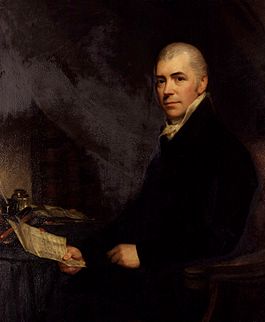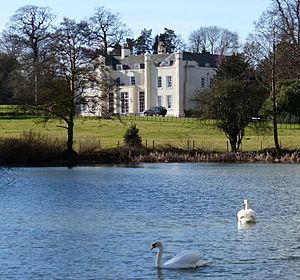Henry Halford facts for kids

Sir Henry Halford, 1st Baronet (born Henry Vaughan, 1766–1844), was a very important doctor in England. He was the president of the Royal College of Physicians for 24 years! He also served as a special doctor to four British monarchs: King George III, George IV, William IV, and the young Queen Victoria. He cared for other members of the Royal Family too, until he passed away.
Contents
Early Life and Education
Henry Vaughan was born in Leicester in 1766. His father, Dr. James Vaughan, was also a well-known doctor. Henry had several brothers who became famous, including a judge and a diplomat.
Henry went to Rugby School, where he learned to love classic books. After that, he studied at Christ Church, Oxford University. He earned several degrees, including one in medicine. He also studied medicine in Edinburgh, Scotland.
Becoming a Royal Doctor
After finishing his studies, Henry Vaughan worked with his father for a short time. Then, around 1792, he moved to London to start his own medical practice. Even though he was told it would be hard to succeed quickly, he borrowed money and began his career. He became successful very fast, partly because he was good with people and had strong connections from Oxford.
In 1793, when he was only 27, he became a special doctor to King George III. This was a very young age for such an important role! By 1800, he had so many private patients that he had to leave his job at the Middlesex Hospital. His marriage in 1795 to Elizabeth, whose father was a baron, also helped his career.
In 1809, Henry changed his name from Vaughan to Halford. This was because he was going to inherit a large family estate. This name change was officially confirmed by a law in 1815.
Sir Henry Halford continued to be a royal doctor for many years. He served King George III, then the Prince Regent (who later became George IV), and then King William IV and Queen Victoria. He was also the doctor for other royal family members, like Princess Amelia, King George III's youngest daughter.
He was very active in the Royal College of Physicians. In 1820, he was chosen as its president. He was re-elected every year for 24 years, which was a record! He also helped the College move to a new, better location in London in 1825. Sir Henry Halford was also a trustee for Rugby School and the British Museum.
People at the time called him "The Prince and Lord Chesterfield of all medical practitioners" because he was so elegant and respected.
The Halford Family Estate
Sir Henry Halford was related to an old family called the Halfords through his mother's side. He was expected to inherit their family home, Wistow Hall, after his mother's cousin, Sir Charles Halford, passed away. However, Sir Charles's widow lived in the hall for many years after his death.
Sir Henry Halford finally inherited Wistow Hall in 1814 when the widow passed away. The hall is still owned by the family today, though parts of it have been turned into apartments. Sir Henry Halford passed away in London and was buried at the church in Wistow.
Family Life
Sir Henry Halford married Elizabeth Barbara St. John in 1795. They had two children:
- Sir Henry Halford, 2nd Baronet (1797–1868): He married his cousin, Barbara Vaughan. They had two sons, but neither had children.
- Louisa Halford (died 1865): She married Frederick Coventry and had children.
Sir Henry Halford also had several notable siblings:
- Sir John Vaughan (1768–1839): He became a judge.
- Sir Charles Richard Vaughan (1774–1849): He was a British diplomat.
- Peter Vaughan (died 1826): He was a leader at Merton College, Oxford.
Portraits
- Sir Henry Halford, 1st Bt by Sir William Beechey, painted in 1809.
- Sir Henry Halford, 1st Bt by John Cochran, published in 1844.



